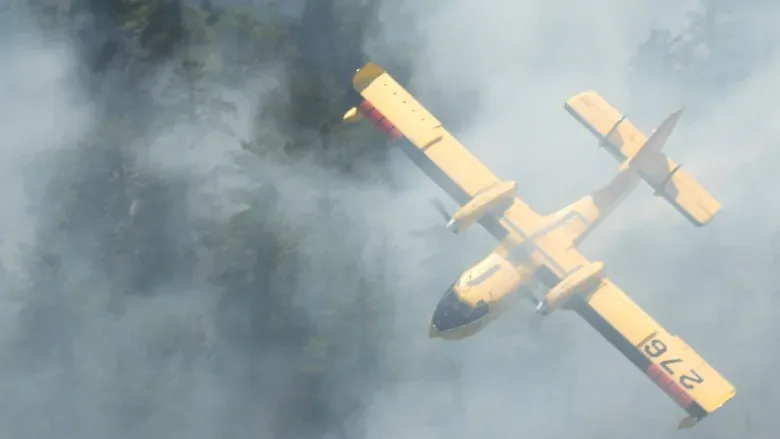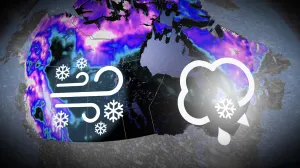
Evacuations continue as forest fires burn near northwestern Ontario communities
A small amount of precipitation is expected around the northwestern Ontario region in the next few days, which should help fire crews with the Ministry of Natural Resources and Forestry slow down some of the big fires in the area.
"The forest fire hazard is going to be low to moderate in the western portions of the region, but still high to extreme in the eastern portions of the region where the rain hasn't arrived quite yet," MNRF fire information officer, Jonathan Scott told CBC News. "They are forecasting that the rain will move through the region and lower the fire hazard ... later today."
[As of Tuesday] 20 active forest fires [were burning] in the region, he said, with five not under control, one being held, five under control and 9 fires being observed.
MUST READ: Beneficial rains, but with the threat for thunderstorms, lightning
GROWING FIRES FORCES EVACUATION OF NEARBY COMMUNITIES
Residents in Pikangikum First Nation as well as Keewayin First Nation have been forced to leave their homes due to the nearby forest fires known as Red Lake Fire 23 and Red Lake Fire 39.
Both fires are still not under control and sprinklers have been set up to help protect buildings and infrastructure in the community, Scott said.
"So far [Red Lake Fire 23] has received pretty minimal rain," Scott added. "I think over the entire fire area, there's been anywhere from trace amounts of rain to I think at most 5 mm of rain. So that will slow the fire down for the day but not really change any major fire situation in the area."
The smoke from Red Lake Fire 39 has affected the community of Pikangikum over the last several days, which has forced residents to leave their community for the second time this summer.
Mapped at over 40,000 hectares in size, Scott said the primary objective is to bring the fire into natural boundaries, such as lakes and rivers, and prevent the fire from further spreading toward the community.
He said lighter winds from the north-east will help move the smoke away from the fly-in community on Tuesday.
"They received some rain on the fire yesterday and they are forecasted to get a little bit more, which should help suppression efforts and reduce the fire behaviour," he said.
PIKANGIKUM EVACUEES TO ARRIVE IN RED LAKE
Around 2,200 evacuees from Pikangikum First Nation have begun arriving in Red Lake and Dryden. They'll stay in those communities temporarily, before being transported to other Ontario cities, where they'll be hosted until it's safe to return to Pikangikum.
According to Mayor Fred Mota, Red Lake declared a state of emergency on Monday morning in order to assist with the evacuation needs.
"We are going to feed them, give them a place to stay for a short time and then they are being transferred further on to Dryden where they are going to meet motor coaches which are going to be transporting residents from Pikangikum to other areas of Ontario," Mota told CBC News.
Dryden has also declared a state of emergency to assist in the evacuation efforts.
Mota said the Red Lake itself has been experiencing some very smoky conditions due to a forest fire that's approximately 40 kilometres north of the community.
"We're experiencing a lot of smoke ... but over the past weekend, a few days ago, the smoke was very thick here and people were experiencing medical problems with breathing and there was a lot of ash falling," Mota said.
According to an email statement from the Ministry of Solicitor General, the government is reaching out to mayors across the province to ask that their communities host evacuees in order to find sufficient space to safely house those in need over the coming days and weeks.
This article was originally published for CBC News.









